
After a few years, with many visits to Italy, we have been carefully searching for a new Italian estate to represent for export, and today we believe we have found a gem!
We are delighted to introduce Bronzato, a family-run estate located in the Valpolicella region.
Italy has always been important to the entire Genuine Wines team. We all studied with Professor Scienza at the Vinitaly International Academy, have often travelled the wine routes of Italy and very often tasted Italian wines, let alone sharing a passion for the culture, language and food of this wonderful country!
Bronzato embodies everything we love to promote: beautiful terroir with organic vines planted on the heights of the Valpolicella appellation, well-balanced fruit-forward wines, environmentally friendly viticulture, and a passionate and friendly winemaking couple with long family history in the region.
Here is a detailed visit to the estate, taking you with us to the small village of Mizzole and the estate’s basalt, limestone and flint hillsides. We hope you enjoy the visit!

Bronzato: The quiet precision of Modern Valpolicella
In the gentle hills just northeast of Verona, the light drifts across rows of vines and olive trees, revealing a patchwork of soils where basalt meets limestone. Here, in the small village of Mizzole, the story of Bronzato unfolds — a young, family-run estate that brings a modern voice to one of Italy’s most historic wine regions.

Why here? The answer lies both in soil and in story. For generations, the Bronzato family worked the land around Verona, growing grapes and other crops but never making their own wine. Massimo’s grandfather sold fruit to larger estates — a livelihood built on hard work but without the satisfaction of seeing what the grapes could truly become.
When Massimo decided to found his own winery, it was both a personal and generational shift: a desire to “close the circle” — to transform the family’s harvest into wines that carry their own voice and identity.
A family vision rooted in craft
Massimo Bronzato serves as both owner and winemaker, while his brother acts as the estate’s consulting oenologist. Together, they have built a project entirely in the family’s hands — a model of quiet dedication and precision.

Though not an historic estate, Bronzato has quickly established a name for meticulous vineyard work and a thoughtful, contemporary interpretation of Valpolicella’s classic blends.
The estate today covers 10 hectares of organic vineyards, planted predominantly with Corvina (around 70%), alongside Corvinone and Rondinella (30%). Corvina stands at the heart of their wines, shaping their transparent, finely tuned style. The expression is unmistakably modern: clean, linear, and expressive, guided by freshness rather than power.
The Bronzato philosophy could be summed up in one sentence — to craft wines that speak clearly, not loudly.
The Terroir: cool hills and living soils
The vineyards unfold across the hills of Mizzole, between 400 and 500 meters above sea level, in one of Valpolicella’s most balanced and promising zones. This altitude defines the character of the wines — a cooler area where ripening unfolds slowly and evenly, preserving acidity and aromatic clarity.
The contrast with the lower valley and the city of Verona is striking. Up here, the air is fresher; a gentle breeze circulates through the vines, and even under bright sunlight, the temperature remains noticeably cooler. This natural moderation allows for gradual, precise ripening — the kind that gives Valpolicella its finest tension and finesse.
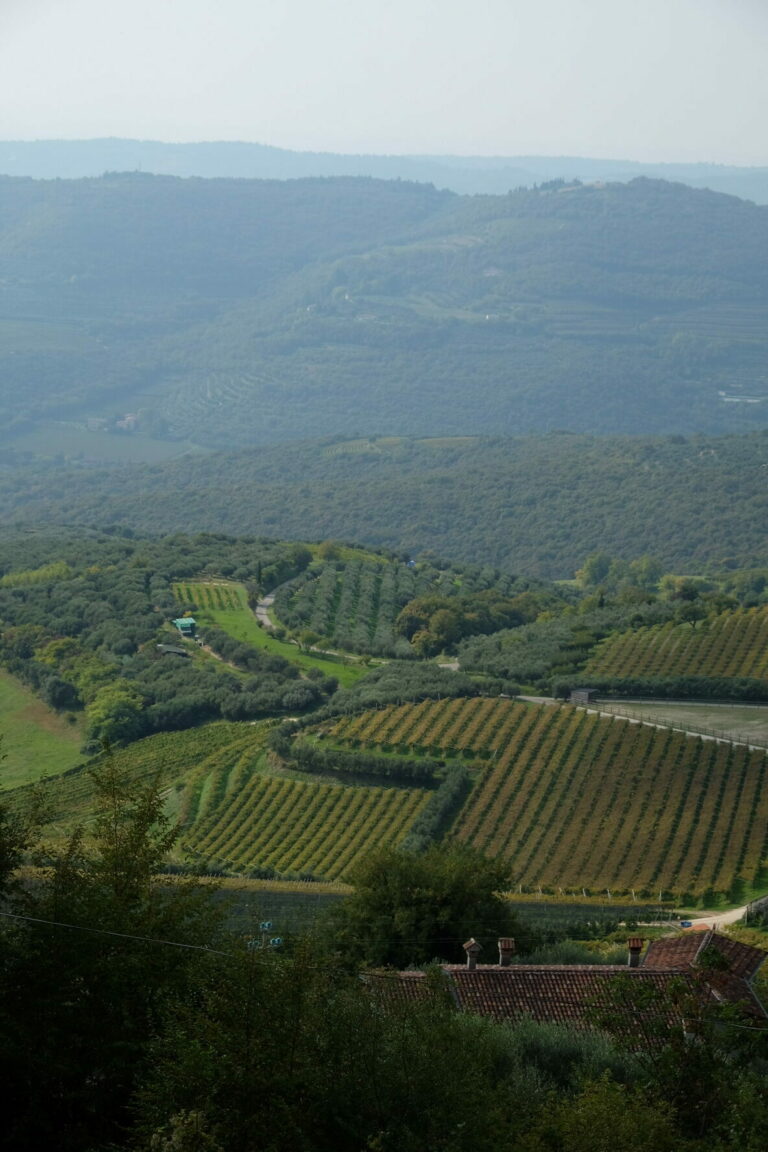
Bronzato practices organic vineyard management, cultivating biodiversity and soil vitality. He works the soil every two rows, while in the alternating rows he sows a mix of mustard, green beans, and cereals, which grow through fall, winter, and spring before being rolled out to create a natural mulch. This year, he used a green manure blend of mustard, oats, triticale, peas, and field beans — a cover crop that enriches organic matter and promotes balance in the ecosystem.
Harvest is carried out in several careful passes, ensuring that each plot is picked at its optimum moment. The soils — a clay base mixed with basalt, flint, and limestone fragments — add another layer of complexity. This flint, scattered throughout the vineyards, holds special significance for Massimo: he sees it as the land’s symbol of resilience and identity. It became so meaningful that he chose it as the estate’s logo and label emblem, a quiet homage to the stones that shape his wines.
This particular Terroir (geology, climate, hillside vineyard) infuses the wines with a mineral core and tactile, polished texture, lending even the Amarone its remarkable poise and elegance.
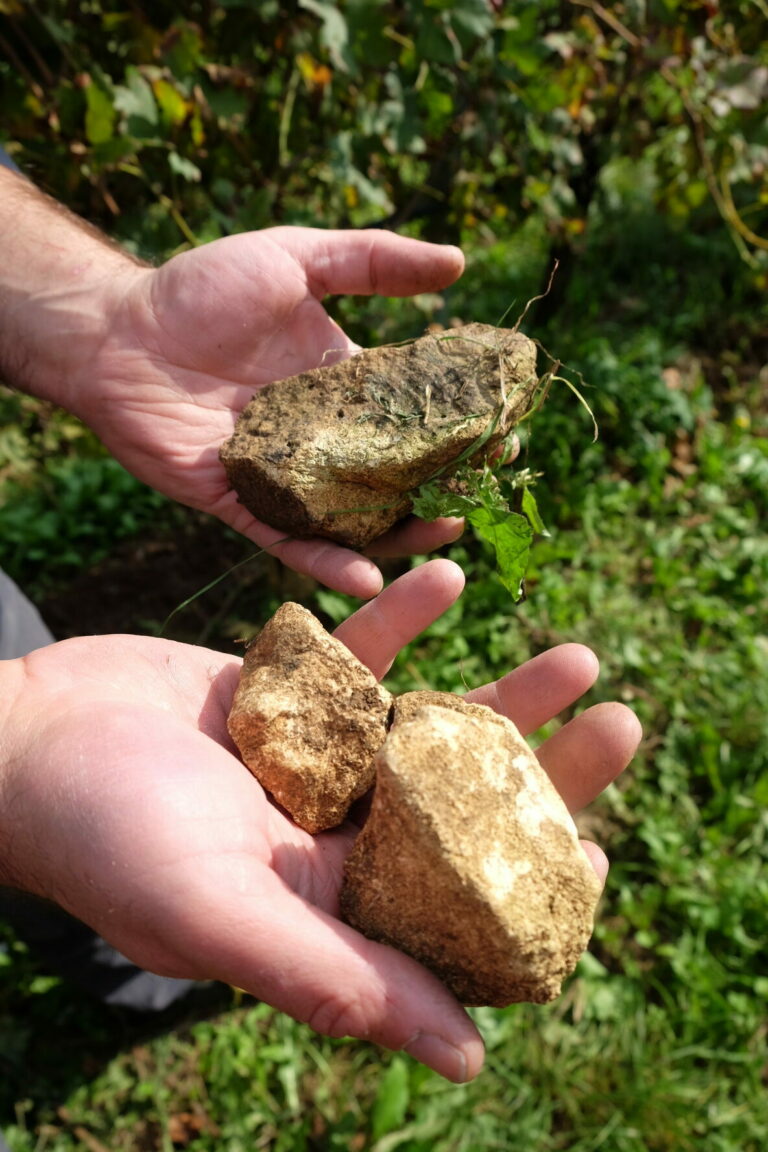
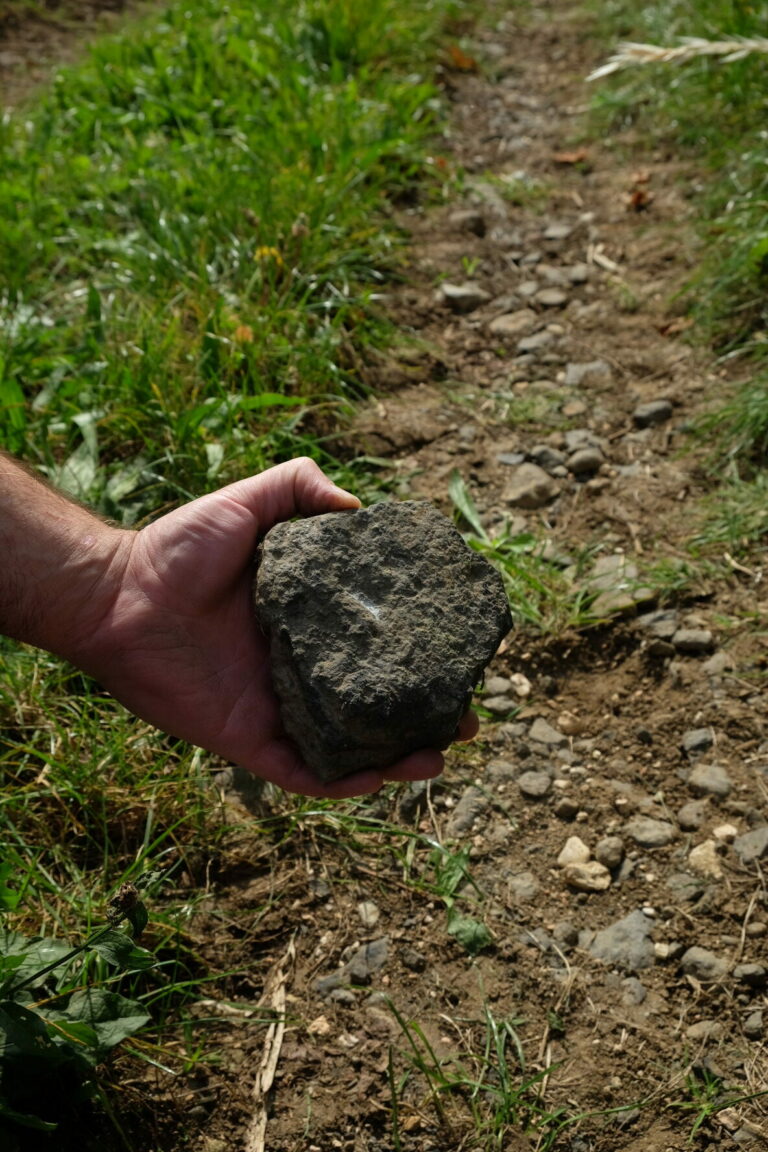
The wines: clarity, freshness, and balance
Bronzato’s production focuses almost entirely on red wines, showcasing the full range of Valpolicella styles — yet the estate has recently expanded its creative scope with an exciting new addition.

Their Valpolicella 2022 reflects the estate’s modern vision — a wine built on Corvina’s purity, framed by Corvinone and Rondinella. It’s light on its feet, vibrant, and gracefully structured, with bright fruit and a subtle mineral finish. The wine captures that elusive balance between fruit and freshness — a contemporary expression of an ancient land.
Next comes the Valpolicella Ripasso Superiore 2022, crafted using the traditional ripasso method, where the young wine undergoes a second fermentation on the skins of grapes previously used for Amarone. This adds texture, depth, and warmth, resulting in a darker, riper profile — notes of cherry, plum, and spice layered over a firm, velvety structure. Despite its richness, the wine retains the clarity and freshness that define the Bronzato signature.
At the top of the range lies the Amarone della Valpolicella, the estate’s flagship wine and the truest reflection of its identity. Three vintages — 2020, 2019, and 2018 — are currently available, each showing an evolution of style and precision. These are wines of ripe fruit and elegant intensity: black cherry, dried plum, gentle spice, and a lingering sense of freshness. The 2018 vintage stands out for its delicate floral nuance, an unexpected grace note that softens the wine’s power and adds depth to its perfume. These Amarones are full-bodied yet never heavy — wines of energy, not excess.
A more recent creation brings a breath of freshness to the Bronzato lineup — the Rosé 2024, made predominantly from Corvina. Direct pressed and fermented entirely without skin contact, it shows a pale, delicate pink hue and a fine, transparent fruit character. On the palate, it’s crisp, bright, and gently aromatic, with a whisper of wild forest berries on the finish. The result is a wine that feels effortless yet precise — a perfect echo of the estate’s focus on balance and purity.


Inside the cellar: patience, experiment, and family passion
Visiting Bronzato reveals not only the technical side of winemaking but also the human heartbeat behind it. What strikes most is the couple’s work ethic and quiet determination. Every gesture — from pruning to pressing — is deliberate and purposeful. Their passion is not performative; it is lived daily, through early mornings, late harvests, and the constant pursuit of refinement.
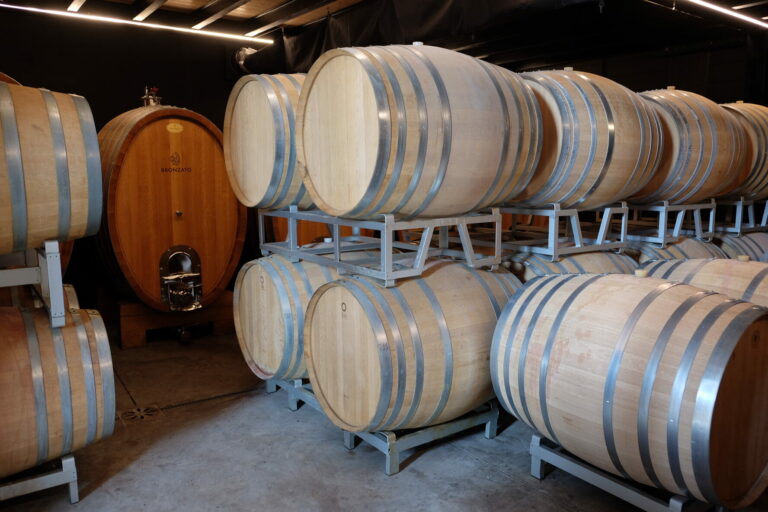
The cellar reflects the same ethos of balance and experimentation. The Valpolicella Classico is aged exclusively in stainless steel to preserve its brightness and immediacy. The Valpolicella Ripasso spends about seven months in tonneaux, followed by aging in large 20-hectoliter oak casks to refine structure and harmony. For Amarone, Massimo prefers large botti of 20–30 hectoliters.
Smaller barriques are also part of his palette — used selectively to enrich certain Amarone lots, adding depth and aromatic layering for blending. His philosophy is clear: large-format oak for delicacy, smaller barrels for complexity — never excess.
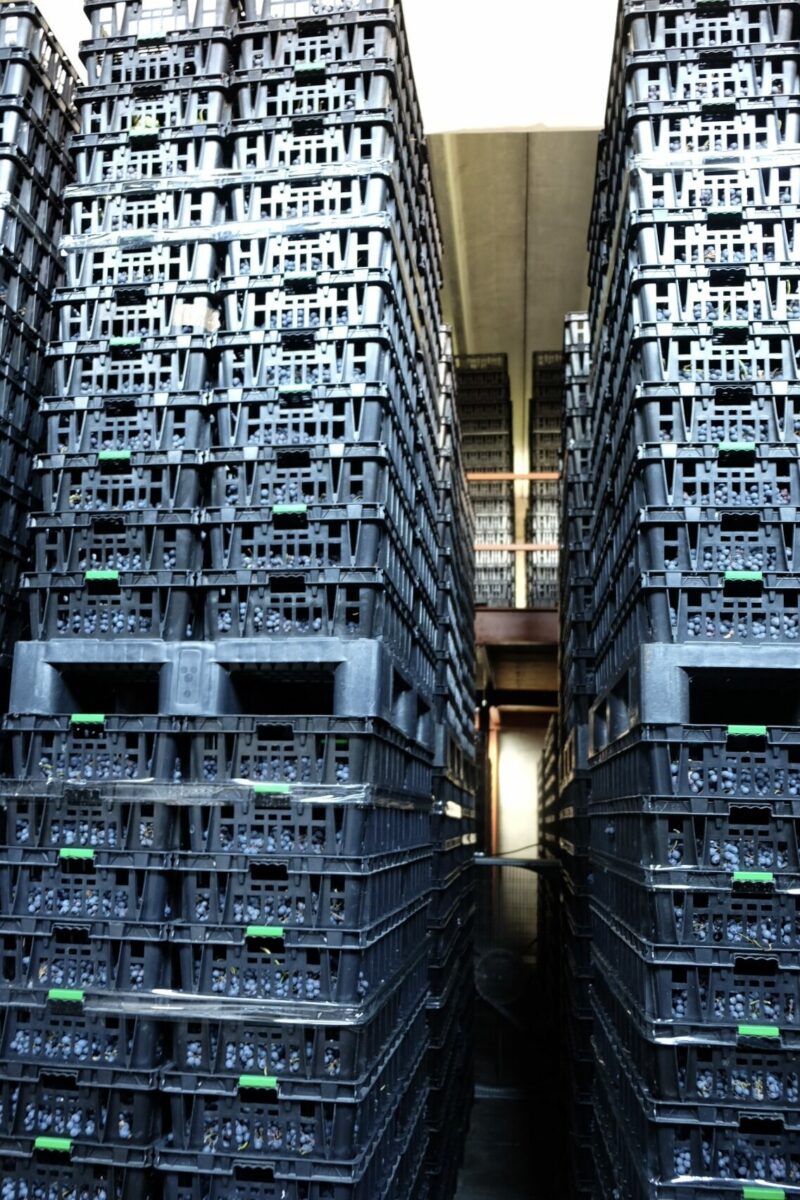

Perhaps the most captivating part of the visit is witnessing the appassimento process — the slow drying of grapes destined for Amarone. The clusters rest for about three months in well-ventilated rooms, where the hillside air gently concentrates the fruit. Observing how the grapes evolve over time — how sweetness intensifies, flavors condense, and aromas turn from fresh cherry to fig and violet — reveals the patience and sensory awareness behind every bottle.
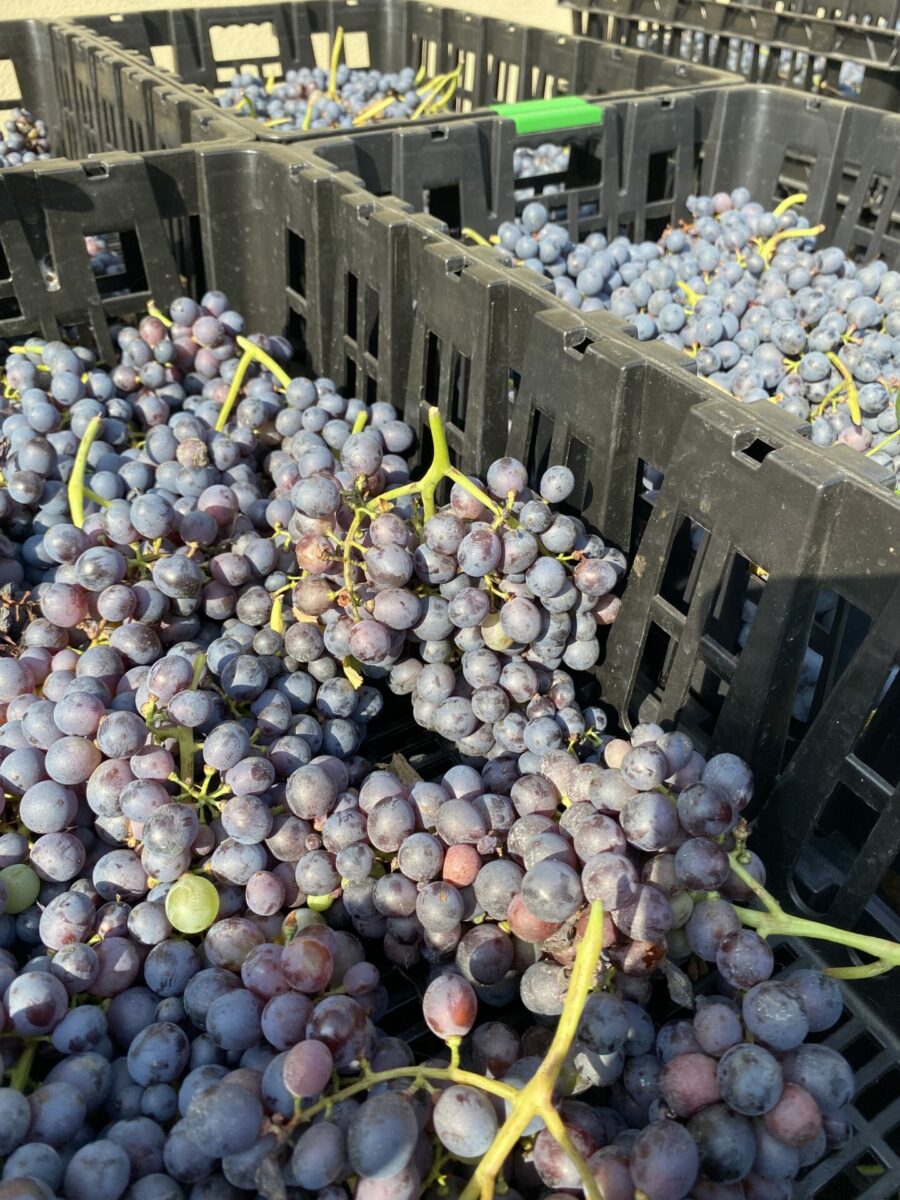
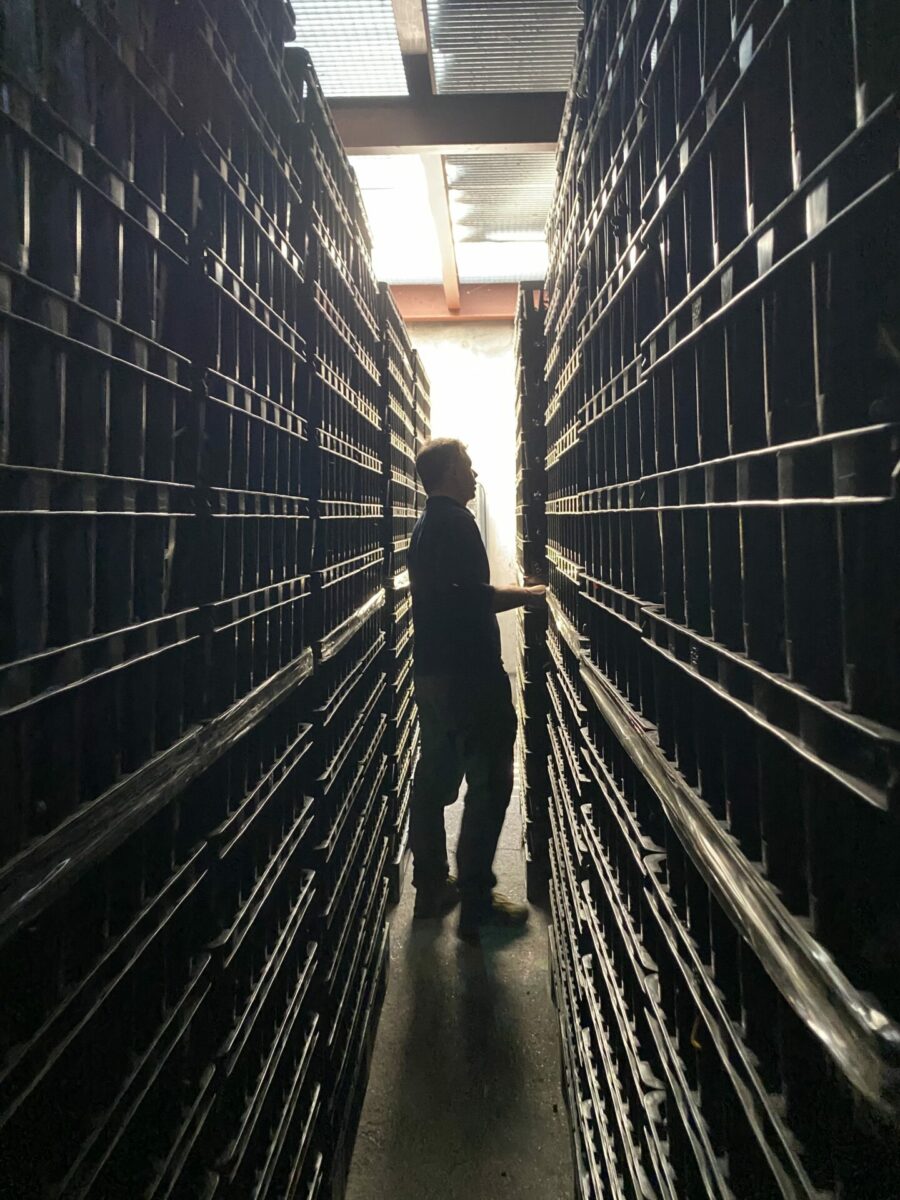
A modern classic in the making
Bronzato may be a young estate, but its philosophy already feels timeless. It is grounded in hard work, guided by sensitivity to place, and expressed through wines that balance purity, freshness, and depth.
The wines of Bronzato whisper rather than shout, yet their message is unmistakable: a new generation of Valpolicella has arrived — one that speaks with honesty, elegance, and quiet conviction

This post is also available in Version française.
